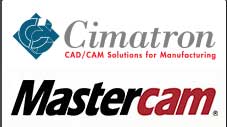Resin
Resin is a type of material that is used for plastic injection during the molding process.
Colorant
This is a pigment system, used in the formation of pellets, or as a liquid, which is mixed with different types of resin to produce a specific type of color. In order to pinpoint the color that you would like for every plastic part or product, the color matching must be very specific, something that can be designed by engineers to concentrate on each color for every application.
Mold
There is a hollow form that can be produced from stainless steel in which the plastic will be injected, or inserted in some way, in order to create a plastic part. The molds for this process can be very expensive to design, and they are also expensive to manufacture, but that is only because of how they are mass-produced.
Mold Cavity
There is a hole in the mold which will be designed in the shape of the part that is desired which is where the resin for the plastic is injected so the part can be made. If there are minimal cavities within the molds, there will be less time required for tooling, as well as it can help minimize the total cost and the time to produce them.
Wall Thickness
Different design aspects, including wall thickness, can impact the overall cost of each project, plus it can augment the speed, as well as the quality, of the parts that are made. Wall thickness will not be subjected to any type of restrictions, but in general, the objective is to create a very thin wall, taking into account the structural requirements of each part and their overall size based upon geometrical and mathematical computations.
Burrs And Flash
Burrs, also referred to as a flash, references a way for like or thin protrusion which can remain after the finished part is done because of resin that has melted and has escaped from the mold cavity. This is very apparent when you are looking at the parting line, or what is called the ejector pin, the flash in this case has been caused as a result of extreme pressure, or the injection speed, which can be fixed by simply reducing the amount that is injected.
Runner System
This is called a channel system which is designed to allow the melted material to flow into each part of the cavity. There are a couple different categories: cold runner and hot runner systems.
Hydraulic Process
Hydraulic refers to the predominant way by which the plastic is injected into the molding. There are different types of hydraulic cylinders which can be clamped together, each representing two separate halves of the molds that are used during this high-pressure process.
Electric Process
When dealing with all electric presses, they can be complicated, and they were initially produced back in the 1980s. The newer models utilize a much more competent form of technology that is much more accurate, faster, quieter, and easier to operate. These are digitally controlled, utilizing servomotors, opposed to hydraulics, and this allows for a much more precise product to be created with higher levels of energy efficiency and speed.
Hybrid Process
this particular process represents having the best of both worlds because when injecting the plastic into these molds, which has been done for decades, you end up with a much more superior clamping force, higher levels of precision, energy savings, better repeatability, and an overall reduction in noise with these electric machines.
End Of Arm Tooling
Efficiency and speed using this plastic injection molding system will lead to a substantial cost savings. It is absolutely no surprise that robotics will play a large role in the improvements in the manufacturing process.
Tonnage
Presses are classified and rated based upon tonnage which is a representation of the clamping pressure that each machine is capable of. This is computed by looking at the force, or press tonnage, which can be between 5 tons and can actually surpass over 4000 tons of pressure.
Hopper And Barrel
Hopper stores plastic which will be used during the molding injection process. Certain materials such as PET, ABS, nylon, and others will come from a dryer unit and will be subsequently added to the plastic to make it dry for processing, plus will remove any external moisture from the material itself.

